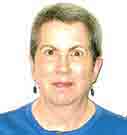|

|
The views expressed on this page are soley
those of the author and do not
necessarily represent the views of County
News Online
|
 |
About our first
First Lady, Martha Washington
By Susan Olling
The first First Lady has been overlooked. She was a fascinating
person.
Years before she was Lady Washington, wife of the President, she was
Martha Dandridge of Chestnut Grove, a small plantation on the Pamunkey
River in New Kent County, Virginia. Born in 1731, she was the
oldest of eight children and learned responsibility very early.
The Dandridge’s owned slaves, most of whom worked in the tobacco
fields. The Dandridge ladies did most of the housekeeping.
Some more difficult chores were delegated, but they had to know how to
do everything in order to be able run their own households. There
was lots to do. Make soap and dyes, stuff pillows and
mattresses, salt and smoke various meats and fish, create home
remedies, bake in a brick oven, cook over an open hearth, knit, darn,
and mend to name but a few.
Martha also had to learn the lessons required of young ladies of the
period, among them: proper manners and posture, curtseys and bows, to
dress stylishly, to set a table correctly, to do fine sewing, dance
well, and how to wear stays. No lady of the period would be
caught dead without them.
True or false: Martha Dandridge was illiterate. If you said true,
you would be incorrect. She loved to read and had a solid grasp
of arithmetic. Her writing may seem poor to us. However,
the rules for spelling, punctuation, and capitalization weren’t yet
standardized. In addition, girls were taught to write in bullet
points. Boys were taught to write using lofty, pretentious
phrases.
By the time she was in her late teens, Martha had caught the eye of
Daniel Parke Custis. His family was at the top of Virginia
society. The Dandridges were lower on the social ladder. He
was twenty years older than Martha. That Daniel was still a
bachelor in his late thirties was due, in no small part, to his
tyrannical father, John Parke Custis IV. Martha somehow managed to talk
to Mr. Custis and won him over. She married Daniel in 1750.
They had four children, two of whom died at very young ages.
Daniel died in 1757 leaving Martha with two small children and the
management of a very large estate. Not only had she the
day-to-day business to manage, she had to communicate with agents in
London and Glasgow. All this required literacy.
Unlike other widows of the period, she had a choice of whether to
remarry and to whom. It was not unusual for a widow or
widower to remarry very quickly after the death of a spouse.
Martha had two suitors by early 1758: Charles Carter and George
Washington. Mr. Carter, although very wealthy, was fifty years
old. Some of his children from his two previous marriages were
almost as old as Mrs. Custis. George Washington, with his home at
Mount Vernon, was on a lower rung on the social ladder than Mrs.
Custis. One of her uncles was very much against the
marriage. However, Martha was a confident woman and knew her own
mind. She married George on 06 Jan 1759. It would probably
have been easier to manage all the acreage in New Kent County living at
her White House home, but George was intent on living at Mount
Vernon. Martha wouldn’t deny him that.
Martha was about five feet tall; George was six feet two inches
tall. In order to get her husband’s attention, it was not unusual
for Martha to grab her husband’s coattails and give a good yank.
What a mental image!
During the years leading up to the break with Great Britain, the
Washingtons lived a comfortable, gentry life at Mount
Vernon. George was becoming a leader in the colonies, and
the two of them discussed politics. Martha supported him
completely.
Starting in 1775, Martha joined her “Old Man” wherever the army was
camped for the winter. Not an easy journey on unpaved roads and
ferries across streams and rivers. When she arrived, it was a
signal to the other officers to invite their wives. During the
winter at Valley Forge, Martha and the others ladies put aside their
fine sewing to darn, make shirts, and knit. All that winter, they
knitted endless pairs of socks for the army. George commanded the
army for eight-and-one-half years; Martha was with him for almost five
of those years. She had no official title; the soldiers called
her “Lady Washington, the soldier’s friend” during all those difficult
winters.
Martha endured the early deaths of remaining two children, her daughter
in 1773 and her son in 1781.
She was an advocate for smallpox inoculation having had the inoculation
in 1776.
After her husband’s two terms as president, she happily moved back to
Mount Vernon. George Washington died on 14 Dec 1799. Martha
destroyed their correspondence and moved to the third floor of the
house. She died 22 May 1802.
A quiet end to a most successful partnership.
|
|
|
|

